
24 January, 2024
Decoding the Polo Shirt: Understanding Fits, Collars, and Plackets
The polo shirt has become a sartorial staple, transcending its origins as athletic wear to become a versatile garment that straddles the line between casual and formal. Despite its ubiquity, few understand the subtleties of the polo shirt's design. From fits and collars to the much-misunderstood 'placket,' this article aims to decode the anatomy of the polo shirt, explaining how slight variations can significantly impact both its look and comfort level.
Anatomy of a Polo Shirt
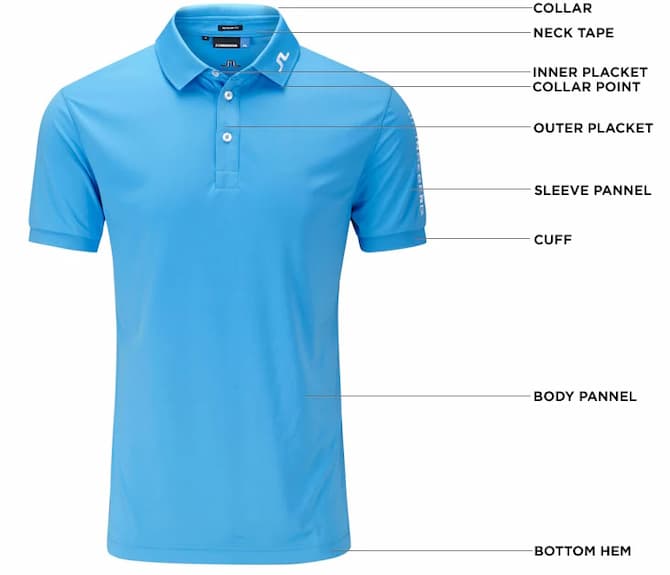
Before delving into details, it's helpful to understand the basic components that make up a polo shirt:
- Body: The central fabric portion that covers the torso.
- Collar: The folded fabric around the neck.
- Sleeves: Short or long, ending in ribbed armbands or plain hems.
- Placket: The opening at the front, usually with buttons.
- Hem: The lower edge of the shirt, often vented for mobility.
Placket: More Than Just Buttons
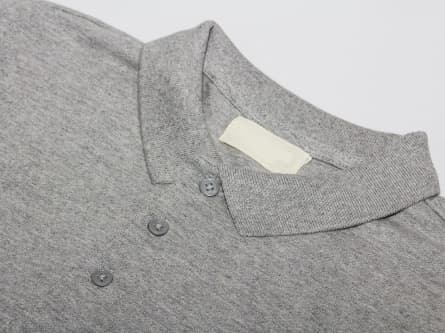
1) Classic Three-Button Placket
The Classic Three-Button Placket is arguably the most popular and versatile of all the styles. This style has three buttons, giving it moderate depth, so it can easily transition from casual to semi-formal settings. When fully buttoned, it provides a neat appearance, ideal for more formal environments. On the other hand, leaving the top button undone gives a slightly more relaxed look, suitable for casual events. Its moderate depth also works well with or without a tie, making it a well-rounded option for most occasions.
2) Two-Button Placket
The Two-Button Placket is often considered the more relaxed sibling of the three-button style. With only two buttons, it doesn't go as deep as its three-button counterpart, providing a more open neckline. This feature offers a laid-back appearance, making it ideal for casual outings or sporting events. However, because it's less versatile when it comes to transitioning between formal and casual settings, it's typically not the best choice for dressier occasions.
3) Extended Placket
As the name implies, this has a more extended opening, often featuring more than three buttons. This style leans towards the formal side and is commonly found on long-sleeved polo shirts intended for business casual or smart casual settings. The extended length allows for greater flexibility in styling; you could button it up for a more conservative look or leave a few buttons undone for a more relaxed appearance without becoming too casual. The extended buttoning also offers the option to fold or unfold the collar, giving you even more choices for how formal or informal you wish to appear.
In summary, the style of placket you choose can significantly influence the look and functionality of your polo shirt. Whether you prefer the classic three-button design for its versatility, the casual two-button for more relaxed settings, or the extended placket for formal occasions, understanding these variations will allow you to select a polo shirt that perfectly fits the situation.
Collar: Ribbed vs. Woven
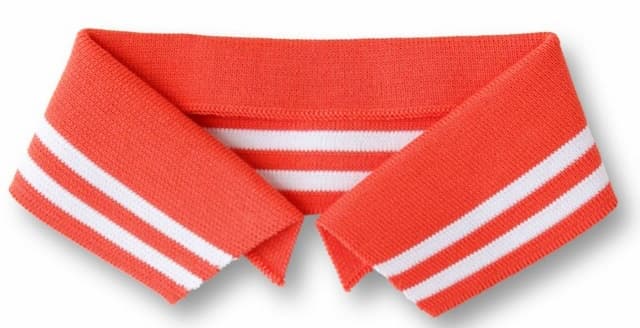
The collar is often a decisive factor in the overall aesthetic of a polo shirt:
1) Ribbed Collar
The Ribbed Collar is a staple in casual polo shirt designs. It's characterised by a textured, elasticated fabric that helps the collar maintain its shape even after multiple wears and washes. The elasticity also adds a level of comfort, as the fabric stretches more easily, allowing for greater movement. This is particularly useful for those who plan to be active while wearing their polo shirt, such as in a sporting context. The ribbed collar has a more laid-back appearance, which makes it a great choice for casual or leisurely activities. However, because of its inherently casual look, it may not be the best choice for formal settings.
2) Woven Collar
In contrast, the Woven Collar offers a more refined appearance. This collar is made from woven fabric and resembles the type you'd find on a traditional dress shirt. The fabric lies flat and does not have the elastic quality of a ribbed collar, making it look more formal. However, the lack of elasticity means the collar is more likely to fold or collapse, especially after prolonged wear or multiple washes. Because of its formal aesthetic, the woven collar is often the go-to choice for business-casual or smart-casual events. It can even be paired with a blazer for a polished look.
Both collars have their merits and drawbacks, and your choice would depend on the occasion and your style. If you're looking for a versatile, everyday polo shirt that's easy to maintain, a ribbed collar may be the way to go. On the other hand, if you need a polo shirt for more formal situations or if you simply prefer a polished appearance, a woven collar would likely be more appropriate.
Fits: From Athletic to Relaxed
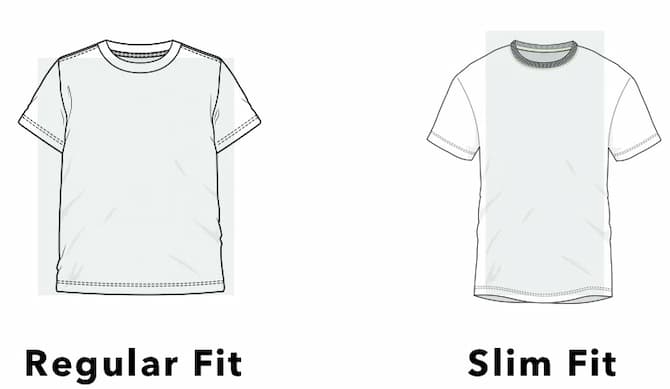
The fit of the polo shirt can greatly affect how it complements your body shape. Here are some common fits:
1) Athletic or Slim Fit
This is designed to closely hug the body's contours, providing a tailored look that emphasises the chest and arms. This fit is particularly flattering on individuals with a lean or athletic physique, as it highlights muscle definition and a narrow waist. Because of its close fit, it's crucial to ensure that the fabric has some degree of elasticity to allow for a comfortable range of movement. This style is often chosen for more formal or smart-casual settings, with a desired sleek appearance. However, given its snug nature, it might not be the most comfortable option for extended periods of wear or physical activity.
2) Regular Fit
The Regular Fit strikes a balance between style and comfort. It offers more room than the athletic fit but is not as loose as the relaxed fit. This makes it a versatile choice that is forgiving on a wide range of body types. The regular fit is an excellent option for those who want a polo shirt that is both stylish and comfortable without drawing too much attention to specific body features. It is well-suited for everyday wear and various occasions, from casual outings to more formal events, depending on how it is styled.
3) Relaxed or Loose Fit
The Relaxed or Loose Fit is the most generous in terms of space, offering plenty of room for movement. This fit prioritises comfort over style, making it an excellent choice for leisurely or active settings where ease of movement is essential. However, the loose fit can appear baggy or sloppy if not chosen carefully. It tends to be more forgiving on fuller body types, where it can offer a comfortable and breathable option. But a relaxed fit can risk looking oversized and shapeless for those with slim or athletic builds.
Choosing the right fit for your polo shirt depends on your body type and the context in which you'll be wearing the garment. Whether you're dressing for a casual day out, an athletic activity, or a smart-casual event, selecting the appropriate fit can significantly impact your overall look and comfort level.
Sleeves: Short vs. Long
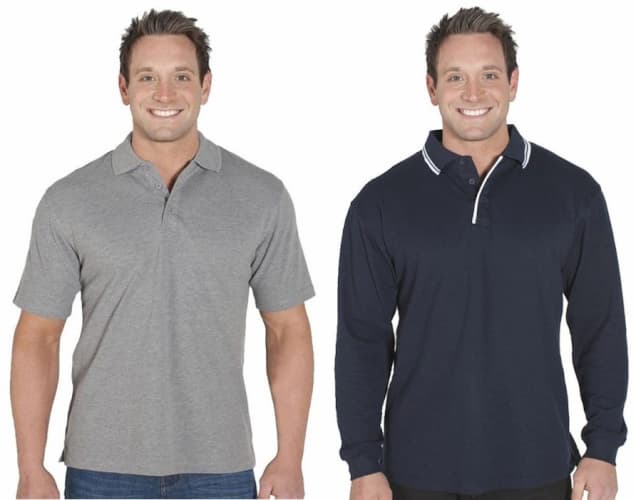
While short sleeves are standard, long-sleeved polo shirts do exist and serve a more formal or cooler-weather function
1) Short Sleeves
Short-sleeved polo shirts are the quintessential style most people think of when the term "polo shirt" is mentioned. They are ideal for warm weather and casual settings, such as outdoor barbecues, golf outings, or weekend events. The short sleeves offer maximum breathability and freedom of movement, making them an excellent choice for physical activities. Because of their casual nature, they are often unsuitable for formal occasions but incredibly versatile for everyday wear. Pairing one with casual trousers or shorts creates a well-balanced look that can take you from a day outing to an informal evening gathering.
2) Long Sleeves
These are less common but offer a unique blend of style and functionality. They are particularly useful for cooler climates or transitional seasons like autumn and spring. The long sleeves can be buttoned at the cuff for a polished look or rolled up for a more laid-back vibe. Regarding formality, they lean towards the more formal end of the spectrum compared to their short-sleeved counterparts, making them suitable for semi-formal settings or business casual environments. They can also add a touch of elegance to an outfit when paired with slacks or chinos.
Selecting between short and long sleeves ultimately boils down to personal preference and the practical considerations of climate and occasion. Short sleeves offer ease and casual style, whereas long sleeves provide a layer of warmth and a dash of formality. By understanding the distinct characteristics of each, you can make a more informed decision that complements your style, needs, and the setting in which you'll be wearing your polo shirt.
Hem: Vented or Straight
The hem at the bottom of a polo shirt can also have variations.
1) Vented Hem
A vented hem is a common feature in many polo shirts, characterised by small slits on either side at the bottom of the garment. These slits offer several practical advantages, most notably providing greater ease of movement. When you sit down or engage in physical activity, the vented hem allows the shirt to accommodate your movements without becoming untucked or feeling restrictive around the waist or hips. This design is particularly beneficial for those who lead active lifestyles or prefer a bit more room for comfort. In terms of aesthetics, it creates a slightly more casual look and is often seen in combination with athletic or regular fits.
2) Straight Hem
On the other hand, a straight hem gives a more uniform and streamlined appearance. This style lacks the slits that come with a vented hem, resulting in a more fitted look. While fashionable, movements like sitting or bending can be a bit more restrictive, as the fabric doesn't have the extra 'give' that a vented hem provides. They are often preferred for more formal or dressy occasions with less emphasis on physical activity and more on maintaining a polished appearance. They pair well with slim-fit or tailored polo shirts and are more likely to be found in styles designed for formal settings.
Choosing between a vented and straight hem comes down to your specific needs and the context in which you'll wear the shirt. If you anticipate needing more freedom of movement and comfort, a vented hem is likely the better option. However, a straight hem could be the ideal choice if you're aiming for a sleek, unbroken silhouette and aren't as concerned with active movement. Both styles have their merits, and understanding these can help you select a polo shirt that looks good and feels comfortable.
The Power of Small Details
The devil is in the details when it comes to fashion, especially in garments as versatile as polo shirts. Elements that might seem inconsequential at first glance - such as the style of placket, the type of collar, or even the hem - can profoundly impact how the shirt looks and feels when worn.
1) Placket Nuances
A classic three-button placket offers a balanced look that can take you from a weekend barbecue to a casual work environment. A two-button placket provides a slightly more laid-back appearance, ideal for leisurely activities. On the other hand, an extended placket lends an air of formality to the polo shirt, making it suitable for occasions that call for a more dressed-up style. The depth and structure of the placket can influence not just the aesthetics but also how the polo shirt sits on your chest, affecting comfort and ease of movement.
2) Collar Choices
The collar, too, is far from a one-size-fits-all feature. With its casual and resilient nature, a ribbed collar is a common choice for athletic or everyday wear. It tends to hold its shape well, even after repeated washes. A woven collar, in contrast, offers a polished look that echoes the traditional dress shirt, suitable for semi-formal events or business casual settings. The choice between ribbed and woven can also affect how the collar frames your face, making the shirt more or less formal in appearance.
3) Fit Fundamentals
As for the fit, the shirt should be comfortable and appropriate for the context. For example, an athletic or slim fit highlights the physique and is often chosen for its modern, youthful aesthetic. A regular fit balances style and comfort, allowing room for movement without appearing baggy. A relaxed or loose fit prioritises comfort and ease, ideal for laid-back settings or those who prefer a more generous cut.
4) Occasion Oriented
Moreover, the occasion you're dressing for should also influence your choices. An afternoon on the golf course might call for a shirt with a vented hem and a ribbed collar for optimal comfort and flexibility. Meanwhile, an informal business meeting might be better suited to a polo with a woven collar and an extended placket for a more professional appearance.
By honing in on these seemingly minor details, you're better equipped to select a polo shirt that aligns perfectly with your comfort needs, body type, and the occasion at hand. This attention to detail allows you to make the most out of your wardrobe, ensuring that you look and feel your best in any situation.
Conclusion
Despite its seemingly simple design, the polo shirt carries a range of stylistic and functional variations. By becoming familiar with its anatomy—from plackets and collars to fits and hems—you are better equipped to make an informed choice, ensuring that you look your best in any situation.
The Polo Shirts Only Team

